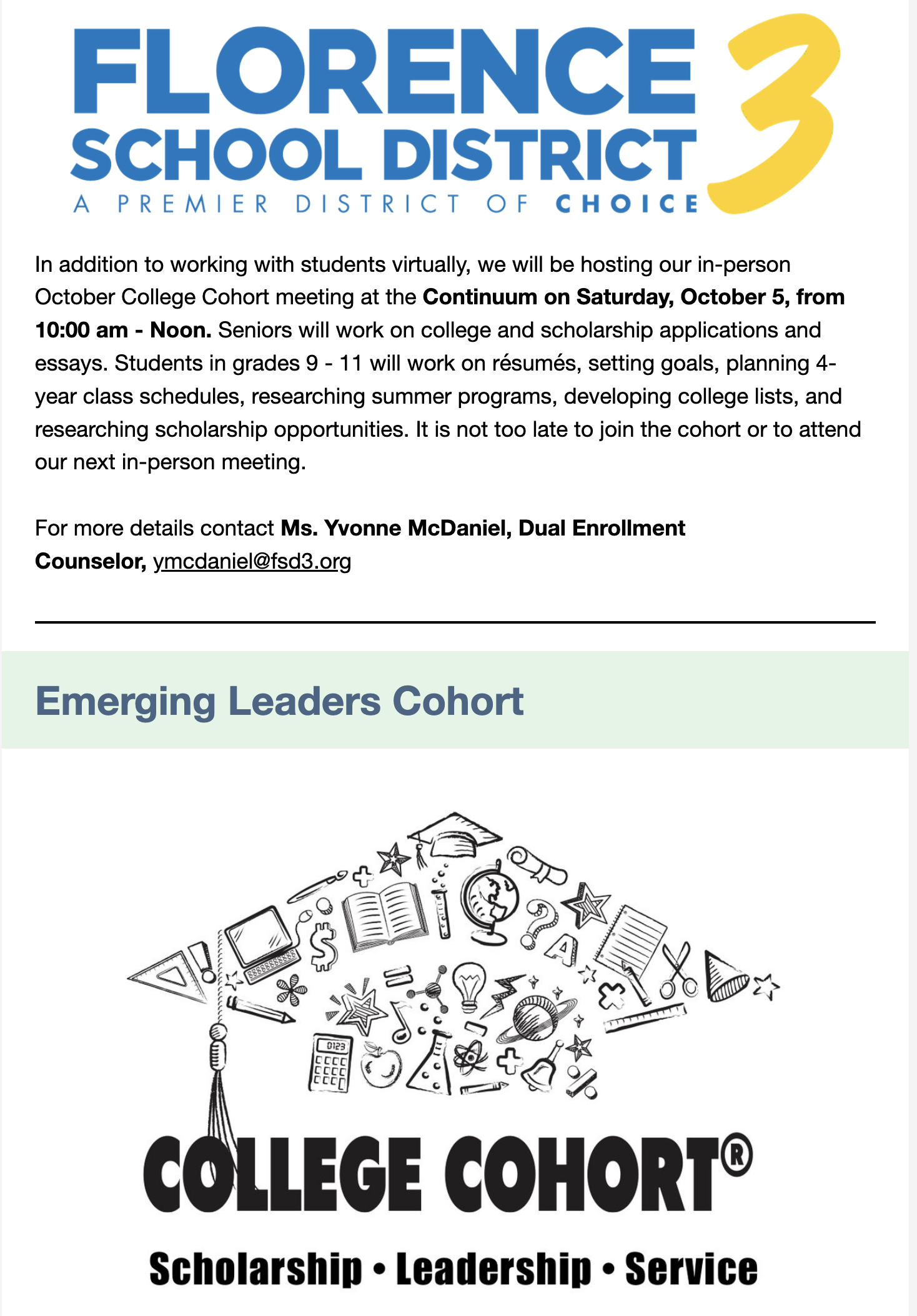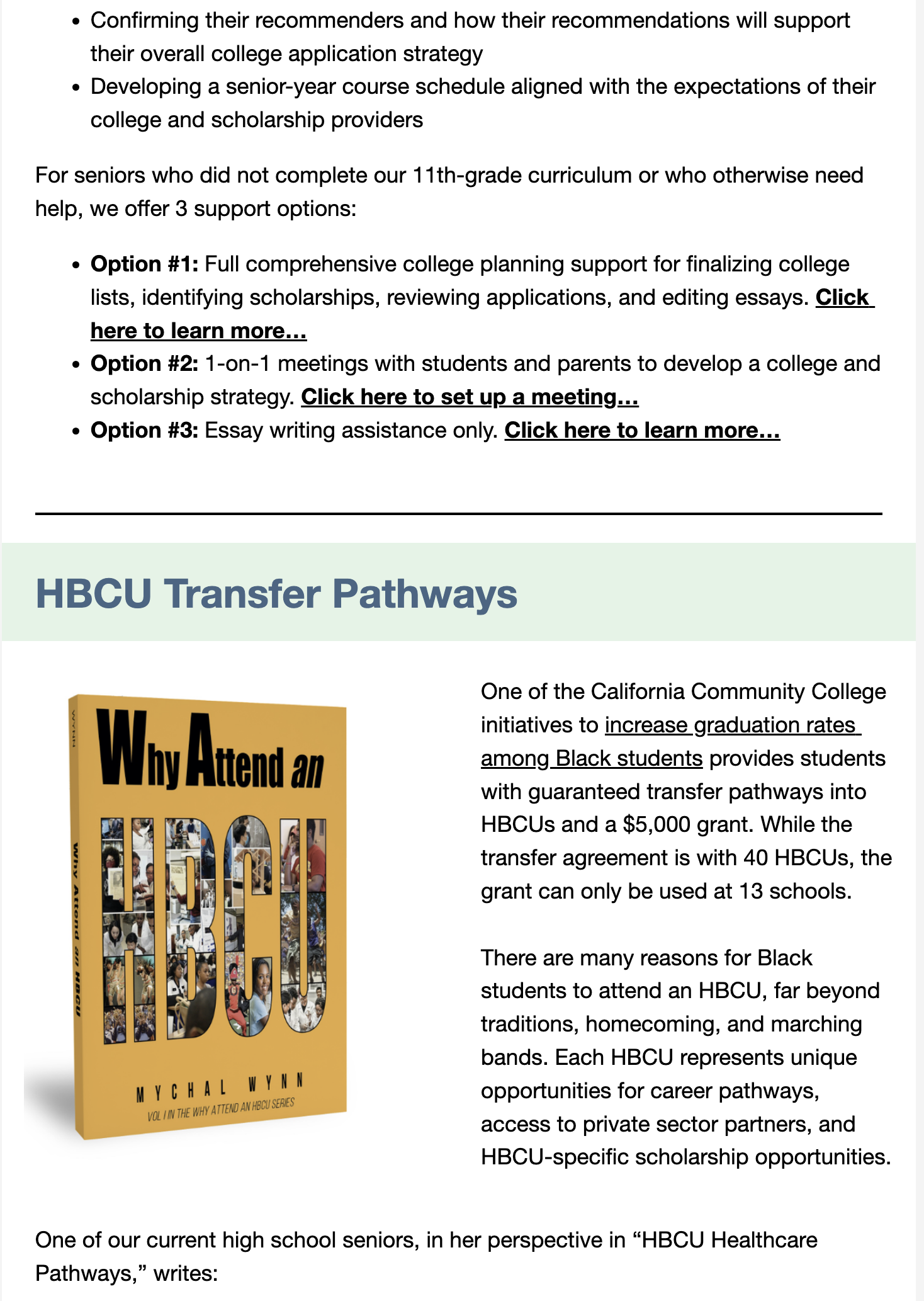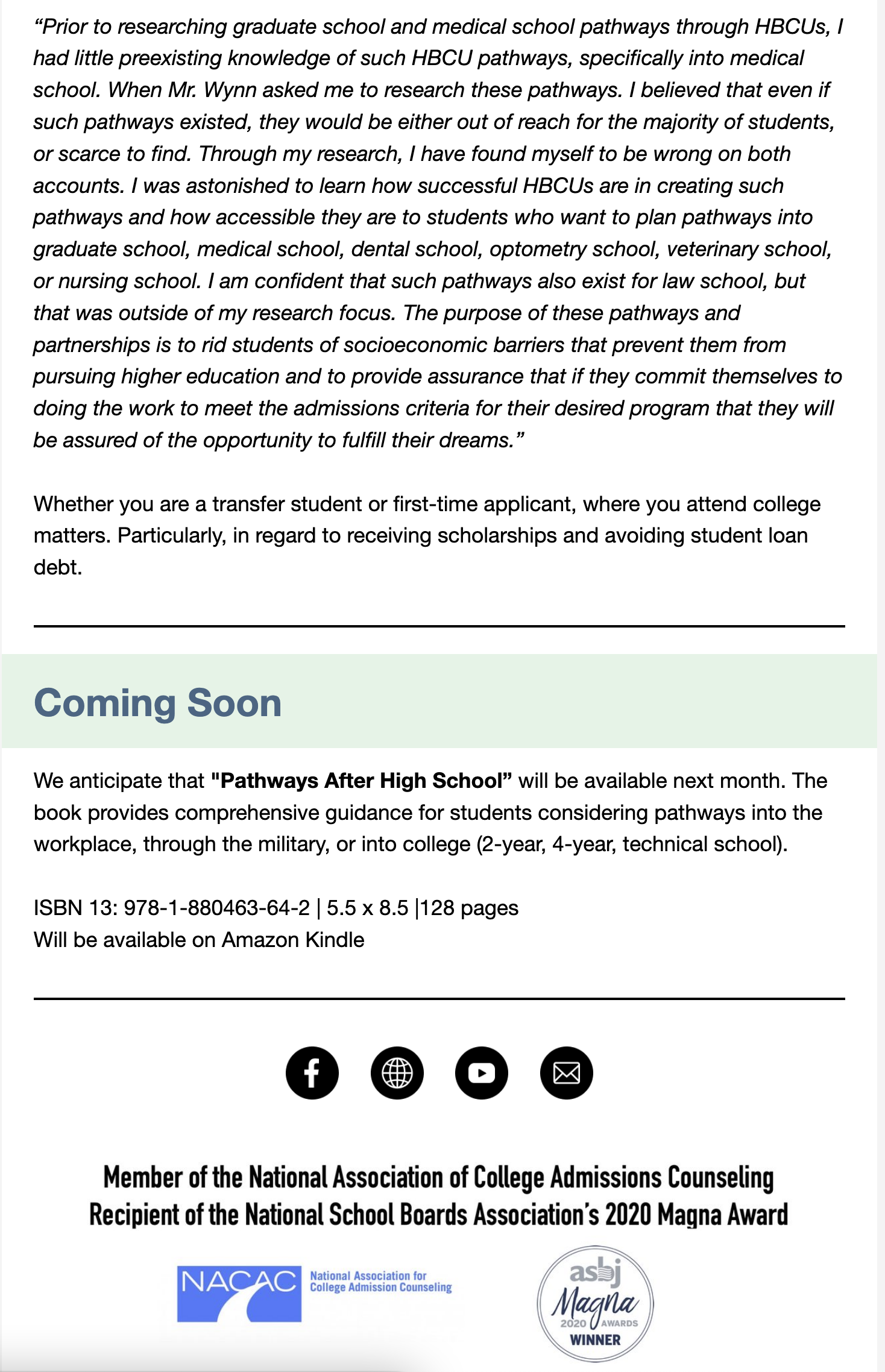Newsletters
Where are our sons? Part II
February 1, 2025
In part I of this series of posts I shared the above photo of my sons, who at the time were in elementary school and middle school. I was inspired to continue this series in response to a discussion with a participant in a workshop session that I presented in January 2025 at the South Carolina Alliance of Black School Educators conference held in Charleston, South Carolina. While my workshop was not actually focused on increasing Black male achievement, during the question and answer part of the session, I made the statement, “Most Black males who are successfully navigating their way into high levels of academic achievement are doing so in spite of us rather than because of us.” I was challenged by one of the attendees, a former superintendent of schools, who admittedly had a long history of success at various levels of education. While I acknowledged his success, I remained adamant that his success was not the norm, a point which he continued to disagree with. Through these posts, I am sharing student achievement data, which paints a bleak picture regarding Black male achievement as Alfred Tatum notes in “Engaging African American Males in Reading:”
The field of education is saturated with studies documenting the poor performance and achievement deficits of African American males throughout their school years. National reading achievement data continue to indicate that as a group, African American males—particularly adolescents in middle and high school classrooms—are not performing well.
My goal in this series is not to convince anyone to do anything as the reality is that Black boys would be reading at higher levels if more people were concerned with their reading levels. If you are a superintendent, principal, teacher, coach, parent, community program director, youth pastor, or student—if you were concerned with the deplorably low reading levels of Black students (or if you are a student), you would be doing something.
As I wrote in the first post in this series, any of these people can blame someone else for the fact that the majority of Black students are not proficient readers as in the story of Everybody, Somebody, Anybody, and Nobody:
Everybody was sure that Somebody would do it. Anybody could have done it, but Nobody did. Somebody got angry about it, because it was Everybody’s job. Everybody thought Anybody could do it, but Nobody realized that Everybody wouldn’t do it. It ended up that Everybody blamed Somebody when Nobody did what Anybody could have.
So I am not trying to convince anyone to do anything. My goal is to help those who are interested in knowing just how tragically low the academic performance of our boys are and the actions they can take if they are interested in making a difference.
Let’s Begin with Reading
Reading is a foundational academic skill. It is how children make sense of the world around them, how to navigate from one place to another, how to cook a meal, how to repair a bicycle, and how to engage in virtually every other subject in school. Now, perhaps more than at any time in history, children have access to virtually any information through videos, podcasts, and social media. These mediums, together with text messaging, contribute to our children becoming less proficient readers and writers. They are simply receiving their information from sources other than reading.
The following tables of Black student performance in reading at 4th grade, 8th grade, and 12th grade indicates that the percentage of students who are proficient or advanced readers decreases between 4th grade and 8th grade and is relatively unchanged by 12th grade with over 80 percent of students reading at a basic level or below at 4th, 8th, and 12th grades.
2022 Reading Performance of Black 4th Graders

2022 Reading Performance of Black 8th Graders

2019 Reading Performance of Black 12th Graders

Students who are reading at the basic level or below are ill-prepared to perform well in a college-prep high school curriculum, on the ASVAB in preparation for military enlistment, or to read manuals associated with any type of trade certification. Therefore, our concern must be to increase the percentages of Black students reading on a proficient or advanced level:
4th Grade:
- 14 percent of Black students are proficient in reading
- 3 percent of Black students are reading on an advance level
8th Grade:
- 15 percent of Black students are proficient in reading
- 1 percent of Black students are reading on an advance level
12th Grade:
- 16 percent of Black students are proficient in reading
- 1 percent of Black students are reading on an advance level
The data tells us that less than 2 in 10 Black 4th graders moving into middle school are reading at the level required to perform well in advanced middle school classes (which qualify for high school credit); less than 2 – 10 Black 8th graders moving into high school are reading at a level required to perform well in advanced high school classes (i.e., honors, AP, IB, dual enrollment), on the SAT/ACT exams, or adequately prepared to pursue career or college pathways. These assertions will become clearer as I examine NAEP math and science performance and ACT exam performance in future posts.
The EducationWeek article, “Researchers Created a Phonics Program With ‘Dramatic’ Results. How It Works” (Sarah Schwartz 1/17/25) notes:
Decades of research have shown that phonics instruction—teaching children how letters represent sounds, and how to blend those sounds together to make words—is the most effective way to get beginning readers to start decoding words. But on average, effect sizes in this research are moderate. Some programs work better than others. And that’s led to confusion about how much phonics to teach, and for how long.
As the “science of reading” movement has spread, at least 40 states and the District of Columbia have passed legislation or enacted policies requiring that schools use evidence-based approaches to teaching students how to read. This almost always includes a mandate for systematic, explicit phonics instruction. Some states have issued lists of approved programs. In this landscape, identifying what works—and why—has taken on a new urgency.
While I appreciate the efforts of the researchers, my wife and I cannot help but to be amused by the “Dramatic” results discovered by these researchers, when over 25 years ago we introduced our sons to “Hooked on Phonics!” and advocated for phonics instruction at every parent presentation over the past 25 years. Our older son who has a BA in English from Amherst College is writing his first book, focused on essay writing. In a recent conversation he mused:
I remember that when I was in pre-k, mom worked with me every day with the ‘Hooked on Phonics’ tapes until I was a fluent reader. I also remember that throughout elementary school, she made me write down words that I either did not understand or had difficulty sounding out. She then made me write down the definition and phonetically how the word sounded. I also remember how she would have me write stories each week in which I used all of the words that I had written in my notebook during the week, which really helped me to become a creative writer and storyteller. Subsequently, I was reading on a high school reading level prior to entering middle school and entered Amherst College with a vocabulary comparable to that of private and boarding school students.
Want to Change Outcomes — Change Strategies
Step 1:The way to become a better reader is to read: If you have access to a program like “Hooked on Phonics” then use it. If not, just get some books and get started.
Step 2:Choose the right books: Rather than limiting the choice of books to so-called grade-level appropriate books, consider Alfred Tatum’s advice:
We need to shore up the resilience of African American adolescent males, particularly struggling readers attending public schools in low-income areas. Identifying texts that can shape positive life outcome trajectories for African American males—who constitute 7 percent of the school-age population (4 million of 53 million)—is a significant challenge. Must-read texts have four characteristics: They are intellectually exciting for both students and teachers, they serve as a roadmap and provide apprenticeship, they challenge students cognitively, and they help students apply literacy skills and strategies independently. More specifically, must-read texts should
- Engage students in authentic discussions in which they can analyze their realities in the context of the curriculum and discuss strategies for overcoming academic and societal barriers.
- Address students’ cognitive and affective domains, taking into account students’ cultural characteristics.
- Connect the social, the economic, and the political to the educational.
- Acknowledge that developing skills, increasing test scores, and nurturing students’ identities are fundamentally compatible.
- Resolve the either-or dilemma of focusing on skill development versus developing intelligence by offering challenges that satisfy both requirements.
- Serve as soft role models in the absence of physically present male role models by providing motivation, direction, and hope for the future and suggesting what is worthwhile in life.
In essence, Dr. Tatum is telling to identify literature that boys are interested in reading, whether about people, historical facts, societal issues, or learning a skill.
Step 3:Make a commitment: In my February newsletter I examined the importance of engaging in setting goals at the beginning of each school year; engaging in a mid-year assessment and setting goals for the second semester of the school year; and engaging in a year-end assessment and planning classes for the next school year. Any teacher, parent, coach, mentor, faith leader, or community leader should be able to understand how these 3 moments in time, during each school year from kindergarten through the 11th grade, should reveal if Black boys are proficient readers, while providing 36 opportunities for intervention.
Step 4: Create a Book Club: One school created a “Back Pack Book Club” where students were responsible for always having a book in their back pack and reading quietly before school and after lunch. Another school created book worm visuals with each student setting a goal as to the number of books they would read each week. Our college planning cohort in Guilford County Schools began as a Black male book club.
Every organization working with Black students, albeit an athletic camp, fraternity, sorority, Boys & Girls Club, YMCA, Links, Jack & Jill, etc. should create a book club. Select books pertaining to your core mission, whether it your mission is focused on study skills, etiquette, career planning, social development, character development, or leadership. In this manner, you will easily identify struggling readers and have the opportunity to make them better readers and communicators. While hands-on learning is the first developmental area of learning, reading is the foundation for navigating all areas of learning in K-12 education in preparation for what comes after high school..
Step 5: Read Aloud: To ensure reading proficiency, students must read aloud so that you can hear how they are sounding out words, grasping concepts, and developing reading comprehension.
Step 6: Establish Your Expectations: Expect less social media engagement and more reading engagement. Require students to write book reports or to provide narrative summaries of their reading.
Step 7: Incorporate into All Learning: Incorporate reading into all learning by engaging boys in reading video game instruction books; schedules; product descriptions; and food labels. In essence, connect anything that they want to reading.
Step 8: Develop an At-home Library: Collect books and develop a library so that students have easy access to books and encourage students to identify favorite authors and genres. Consider 3 of my books to kickstart an at-home library:
- Don’t Quit — Inspirational Poetry
- Follow Your Dreams: Lessons That I Learned in School
- The Eagles who Thought They were Chickens
Step 9: Develop a Vocabulary Book: Use a composition notebook to record words that a student has difficulty pronouncing or does not know the meaning. Write down the definition and phonetic spelling. Use the words to create stories.
I believe that anyone charged with teaching, raising, or mentoring Black males should read my bookEmpowering African American Males: Teaching, Parenting, and Mentoring Successful Black Boys.

ISBN: 978-1880463-69-7
Publication Date: 2007
8.5 x 11, 416 pages | $24.95
Actions You Should Be Taking
January 28, 2025This is a continuation from our February 2025 newsletter regarding the role of mid-year assessments.
 In How to Plan Your Career or College Pathway, I profile the type of career/college planning strategies that resulted in our older son receiving a full need-based scholarship to attend Amherst College, the top ranked liberal arts college in the U.S. at the time, and our younger son being selected as a 2012 Gates Millennium Scholar and accepted into the Honors College at Morehouse College, the top ranked liberal arts college in the world for Black men. I also provide step-by-step K-12 strategies in the following books:
In How to Plan Your Career or College Pathway, I profile the type of career/college planning strategies that resulted in our older son receiving a full need-based scholarship to attend Amherst College, the top ranked liberal arts college in the U.S. at the time, and our younger son being selected as a 2012 Gates Millennium Scholar and accepted into the Honors College at Morehouse College, the top ranked liberal arts college in the world for Black men. I also provide step-by-step K-12 strategies in the following books:
Ten Steps to Helping Your Child Succeed in School
A Middle School Plan for Students with College-Bound Dreams
A High School Plan for Students with College-Bound Dreams
The mid-year assessment is part of a student’s “backwards mapping” strategy—a strategy that begins with a student’s long-term educational or career aspirations and works backwards to develop goals and engage in mid-year and year-end assessments throughout a student’s K-12 schooling. Tragically, neither schools nor parents follow this process.
Here is what I outline in the book that you should do:
Begin with the question, “What do you want to do the day after high school?” The answer to this question establishes a long-term vision for a student’s future. Whether the answer is to become a professional basketball player, engineer, entrepreneur, or simply attend college, it reflects a student’s aspirations at a given moment in time—one that may change many times over the course of a student’s K-12 journey as a result of experiences and exposure.
- Begin each school year with specific goals across the areas of academics, behavior, gifts and talents, leadership, service, and awards. Do so will help students to become gifted, talented, and well rounded people who understand the value of leadership and service.
- Pause at the end of the first semester (or mid-year) to review and celebrate process toward, or the achievement of, each goal. Set second semester goals and plan summer program involvement to strengthen weaknesses, develop gifts, or explore interests.
- Pause at the end of the second semester (or year-end) to review and celebrate process toward, or the achievement of, each goal. Plan the following year course schedule based on the successes or challenges experienced. This may lead to pursuing more rigorous classes in some subjects and less rigorous classes in other subjects. Research the teachers and discuss class placement with counselors or administrators. Consider summer enrichment or recovery to prepare for the next school year.
Engaging in this process during every school year from kindergarten through the 11th grade will result in 36 conversations between students and parents, each within the context of a student’s educational or career aspirations. Through these conversations, students should engage in a continuous process of developing, reviewing, and fine-tuning their K-12 course schedules in a manner consistent with the affirm career or college aspirations.
Some of the notable failures of not engaging in this process are:
- Widespread low student achievement as a result of not monitoring achievement and engaging in timely interventions
- Disproportionately high student loan debt as a result of not engaging in planning full scholarship pathways after a student affirms attending college as a long-term goal
- Developing inappropriate behaviors, failing to appreciate the value of serving others, and failure to develop leadership skills as a result of engaging in ongoing conversations about such important areas of character development
Now that you know, there is no excuse not to do!
Black History Month Reading List
January 28, 2025 This is a continuation of my February 2025 newsletter in which I shared my top ten list of books for those interested in exploring the truth of Black authors as they tell our stories:
This is a continuation of my February 2025 newsletter in which I shared my top ten list of books for those interested in exploring the truth of Black authors as they tell our stories:
- Mychal Wynn: The Eagles who Thought They were Chickens
- Carter G. Woodson: The Mis-Education of the Negro
- Maya Angelou: Still I Rise
- WEB Du Bois: The Souls of Black Folk
- Ralph Ellison: Invisible Man
- Richard Wright: Black Boy
- Autobiography of Malcolm X as told to Alex Haley
- Chancellor Williams: The Destruction of Black Civilization
- Yosef A.A. ben-johannan: Africa – Mother of Western Civilization
- Cheikh Anta Diop: African Origina of Civilization
- Molefi Kete Asante: Kemét, Afrocentricity and Knowledge
As a living Black author, I believe that my books should be part of any Black History Month reading list focused on inspiring Black children:
- Don’t Quit — Inspirational Poetry
- Empowering African American Males: A Guide to Increasing Black Male Achievement
- Enough is Enough: The Explosion in Los Angeles
- Follow Your Dreams: Lessons That I Learned in School
- HBCU Healthcare Pathways
- HBCU STEM Pathways
- The Eagles who Thought They were Chickens
- Why Attend an HBCU
Mychal Wynn’s Recommended Black Male Book Club
and Black History Month Reading List for Primary Readers
1 | 47 (Mosley) |
2 | A Band of Angels: A Story Inspired by the Jubilee Singers (Hopkinson) |
3 | A Middle School Plan for Students with College-Bound Dreams (Wynn 2007) |
4 | An Invisible Thread: The True Story of an 11-year-old Panhandler, a Busy Sales Executive, and an Unlikely Meeting (Schroff 2012) |
5 | Away West (McKissack 2006) |
6 | Backyard Animal Show, The (Ziggy and the Black Dinosaurs #5) (Draper 2006) |
7 | Bad News for Outlaws (Nelson) |
8 | Barack (Winter) |
9 | Barack Obama: Son of Promise, Child of Hope (Grimes) |
10 | Begging for Change (Flake 2004) |
11 | Between Madison and Palmetto (Book #3) (Woodson 2002) |
12 | Bird in a Box (Pinkney) |
13 | Black Jack: The Ballad of Jack Johnson (Smith) |
14 | Black Pioneers of Science and Invention (Haber 1992) |
15 | Bud, Not Buddy (Curtis 2004) |
16 | Buried Bones Mystery, The (Ziggy and the Black Dinosaurs #1) (Draper 2006) |
17 | Catching the Dream: The Story of a Young Girl’s Baseball Dream (Hubbard 2010) |
18 | Chess Rumble (Neri 2007) |
19 | Color Me Dark: The Diary of Nellie Lee Love (McKissack 2000) |
20 | Curtis Aikens and the American Dream (Rather) |
21 | Darnell Rock Reporting (Myers 1996) |
22 | Dave the Potter: Artist, Poet, Slave (Hill) |
23 | Don’t Quit – Inspirational Poetry (Wynn 1998) |
24 | Dreams of My Father by Barack Obama (Obama 2004) |
25 | Elijah of Buxton (Curtis, 2007) |
26 | Every Little Thing: Based on the song ‘Three Little Birds’ by Bob Marley (Marley 2012) |
27 | Follow Your Dreams: Lessons That I Learned in School (Wynn 2000) |
28 | Forged by Fire (Draper, 1998) |
29 | Freedom on the Menu: The Greensboro Sit-Ins (Weatherford 2007) |
30 | Friendship for Today, A (McKissack 2007) |
31 | Ghetto Cowboy (Neri) |
32 | Gifted Hands, Kids Edition: The Ben Carson Story (Lewis 2009) |
33 | Glory Be (Scattergood) |
34 | Go for It! (Ervin “Magic” Johnson/Novak) |
35 | Goin’ Someplace Special (McKissack) |
36 | Grandfather and I (Buckley) |
37 | Hand in Hand: Ten Black Men Who Changed America (Pinkney 2012) |
38 | Handbook for Boys (Myers 2003) |
39 | He’s Got the Whole World in His Hands (Nelson 2005) |
40 | Henry’s Freedom Box: A True Story from the Underground Railroad (Levine) |
41 | Hip Hop Speaks to Children: A Celebration of Poetry with a Beat (Giovanni 2008) |
42 | Home-Run King (Scraps of Time) (McKissack 2009) |
43 | Hoops (Myers 1983) |
44 | Hot, Salty, Sweet, Sour (Smith 2003) |
45 | How to (Almost) Ruin Your School Play (Willimena Rules! Book #4) (Wesley 2005) |
46 | How to Face Up to the Class Bully (Willimena Rules! Book #6) (Wesley 2007) |
47 | Hush (Woodson 2002) |
48 | I Hadn’t Meant to Tell You This (Woodson 2010) |
49 | I love The Skin I’m In (Flake 1998) |
50 | I Survived #7: I Survived the Battle of Gettysburg, 1863 (Tarshis 2013) |
51 | It’s Crunch Time! (Brewer 2011) |
52 | Jackson Jones and Mission Greentop (Book #1) (Quattlebaum 2005) |
53 | Jackson Jones and the Curse of the Outlaw Rose (Book #3) (Quattlebaum 2008) |
54 | Jackson Jones and the Puddle of Thorns (Book #2) (Quattlebaum 2005) |
55 | John Henry (Lester) |
56 | Jones Family Express, The (Steptoe 2005) |
57 | Julian’s Glorious Summer (Cameron 1987) |
58 | Junebug in Trouble (Mead 2003) |
59 | Juneteenth: Freedom Day (Branch) |
60 | Keena Ford and the Field Trip Mix-Up (Thomson 2009) |
61 | Keena Ford and the Second-Grade Mix-Up (Thomson 2008) |
62 | Keeping the Night Watch (2008) |
63 | Laugh with the Moon (Burg) |
64 | Letters to Young Black Men (Whyte, III) |
65 | Lift Every Voice and Sing (Johnson) |
66 | Lincoln and Douglass: An American Friendship (Giovanni) |
67 | Locomotion (Woodson 2003) |
68 | Looking Like Me (Myers) |
69 | Lost in the Tunnel of Time (Ziggy and the Black Dinosaurs #2) (Draper 2006) |
70 | Love to Langston (Medina) |
71 | March: Book 1 (Rep. John Lewis & Andrew Aydin 2013) |
72 | Meet Danitra Brown (Grimes 1997) |
73 | Miami Sees it Through (Miami Jackson series) (McKissack 2001) |
74 | Minty: A Story of Young Harriet Tubman (Schroeder 2000) |
75 | Mister and Me (Holt 2000) |
76 | More Stories Julian Tells (Cameron 1989) |
77 | More Than Anything Else (The Story of Booker T. Washington) (Bradby 1995) |
78 | My Brother Martin: A Sister Remembers Growing Up with the Rev. Dr. Martin Luther King, Jr. (Christine King Farris) |
79 | My Life as a Rhombus (Johnson 2008) |
80 | My Man Blue (Grimes 2002) |
81 | Nelson Mandela (Kadir 2013) |
82 | Nobody Owns the Sky: The Story of “Brave Bessie” coleman (Lindbergh) |
83 | One Crazy Summer (Williams-Garcia 2011) |
84 | Only Passing Through: The Story of Sojourner Truth (Rockwell) |
85 | Out of My Mind (Draper 2010) |
86 | P.S. Be Eleven (Williams-Garcia 2013) |
87 | Peace, Locomotion (Woodson 2009) |
88 | Percy Julian: Forgotten Genius (Agard) |
89 | Pink and Say (Polacco 1994) |
90 | Remember: The Journey to School Integration (Morrison) |
91 | Richard Wright and the Library Card (Miller) |
92 | Rock of Ages: A Tribute to the Black Church (Bolden) |
93 | Romiette and Julio (Draper 2001) |
94 | Rosa (Giovanni) |
95 | Ruby Flips for Attention (Ruby and the Booker Boys) (Barnes 2009) |
96 | Ruth and the Green Book (Ramsey 2010) |
97 | Shadows of Caesar’s Creek (Ziggy and the Black Dinosaurs #3) (Draper 2006) |
98 | Shimmershine Queens (Yarbrough 1996) |
99 | Show Way (Woodson 2005) |
100 | Sit-In: How Four Friends Stood Up by Sitting Down (Pinkney) |
101 | Slumber Party Payback (Ruby and the Booker Boys) (Barnes 2008) |
102 | Song for Harlem (McKissack 2006) |
103 | Sounder (Armstrong 2002) |
104 | Space Mission Adventure, The (Ziggy and the Black Dinosaurs #4) (Draper 2006) |
105 | Sparrow (Smith 2008) |
106 | Spellbound (McDonald 2001) |
107 | Stars and Sparks Onstage (Ziggy and the Black Dinosaurs #6) (Draper 2007) |
108 | STAT: Standing Tall and Talented #1 (Stoudemire 2012) |
109 | Street Love (Myers 2007) |
110 | Sunrise Over Fallujah (Myers 2008) |
111 | Sweet Clara and the Freedom Quilt (Hopkinson 2003) |
112 | Sweet Hereafter (Heaven Trilogy #3) (Johnson 2010) |
113 | Sweet Music In Harlem (Taylor 2004) |
114 | Taking the Lead (Moore 2012) |
115 | Talkin’ About Bessie: The Story of Aviator Elizabeth Coleman (Grimes 2002) |
116 | Tears of Tiger (Draper 1994) |
117 | The Bat Boy and His Violin (Curtis 2001) |
118 | The Broken Bike Boy and the Queen of 33rd Street (Flake 2007) |
119 | The Colors of Us (Katz 2002) |
120 | The Eagles who Thought They were Chickens (Wynn 1999) |
121 | The Other Half of My Heart (Frazier) |
122 | The Pact (Jenkins, Hunt, Davis, 2002) |
123 | The poem, “Our Deepest Fear” (Williamson 1992) |
124 | The Story of Ruby Bridges (Coles) |
125 | The Toothpaste Millionaire (Merrill) |
126 | The Village That Vanished (Nelson 2004) |
127 | There Are No Children Here: The Story of Two Boys Growing Up in The Other America (Kotlowitz 1992) |
128 | Trivia Queen, 3rd Grade Supreme (Ruby and the Booker Boys) (Barnes 2008) |
129 | Under the Quilt of Night (Hopkinson 2005) |
130 | Vision of Beauty: The Story of Sarah Breedlove Walker (Lasky 2003) |
141 | Watsons Go To Birmingham – 1963 (Curtis 2000) |
142 | Way a Door Closes, The (Smith 2003) |
143 | We Beat the Street: How a Friendship Pact Led to Success (Davis, Jenkins, Hunt 2006) |
144 | We March (Evans) |
145 | What Color Is My World?: The Lost History of African-American Inventors (Abdul-Jabbar 2012) |
146 | When Harriet Met Sojourner (Clinton 2007) |
147 | When Marian Sang (Ryan 2003) |
148 | Words with Wings: A Treasury of African-American Poetry and Art (Rochelle) |
149 | You Can Do It! (Dungy 2008) |
150 | Yummy: The Last Days of a Southside Shorty (Neri 2010) |
Mychal Wynn’s Recommended Black Male Book Club
and Black History Month Reading List for High School Readers
The primary grades: A reading list for black males
1 | Yo, Little Brother: Basic Rules of Survival for Young African American Males. Anthony C. Davis and Jeffrey W. Jackson. (1998). |
2 | Reallionaire: Nine Steps to Becoming Rich from the Inside Out. Farrah Gray. (2005). |
3 | A High School Plan for Students with College-Bound Dreams (Wynn 2007) |
4 | There Are No Children Here: The Story of Two Boys Growing Up in The Other America (Kotlowitz 1992) |
5 | Workin’ on the Chain Gang: Shaking Off the Dead Hand of History. Walter Mosley. (2000). |
6 | The Pact (Jenkins, Hunt, Davis, 2002) |
7 | A Hope in the Unseen: An American Odyssey from the Inner City to the Ivy League. Ron Suskind. (1999). |
8 | Rite of Passage. Richard Wright. (1994). |
9 | Barack Obama: Son of Promise, Child of Hope (Grimes) |
11 | The Magnificent Twelve: Florida’s Black Junior Colleges, – Smith, Ph.D., Walter L. |
12 | Fortune’s Bones: The Manumission Requiem, – Nelson, Marilyn |
13 | Carver: A Life in Poems, – Nelson, Marilyn |
14 | Malcolm X: – Any Means Necessary, – Myers, Walter Dean |
15 | Mississippi Challenge, – Walter, Mildred Pitts |
16 | Martin Luther King, Jr. and the Freedom Movement, – Patters, Lillie |
17 | We Beat the Street: How a Friendship Led to Success, – Davis, Sampson, Jenkins, George, Hunt, Rameck and Draper, Sharon |
19 | Anthony Burns: The Defeat and Triumph of a Fugitive Slave, – Hamilton, Virginia |
20 | Trouble’s Child, – Walter, Mildred Pitts |
21 | The Magical Adventures of Pretty Pearl, – Hamilton, Virginia |
22 | Lena Horne – Haskins, James |
23 | The Middle Passage: White Ships Black Cargo, – Feelings, Tom |
24 | This Life, – Poitier, Sidney |
25 | Don’t Explain: A Song of Billie Holiday, – De Veaux, Alexis |
26 | The Young Landlords, – Myers, Walter Dean |
27 | James Van Der Zee: The Picture Takin’ Man, – Haskins, James |
28 | Let the Lion Eat Straw – Southerland, Ellease |
29 | Cornrows, – Yarborough, Camille |
30 | Benjamin Banneker, – Patterson, Lillie |
34 | I Have a Dream, – King, Martin Luther, Jr. |
35 | Portia: The Life of Portia Washington Pittman, the Daughter of Booker T. Washington, – Stewart, Ruth Ann |
36 | The Legend of Africana, – Robinson, Dorothy |
37 | I Never Had It Made: the Autobiography of Jackie Robinson, as told, – Duckett, Alfred |
38 | My Chill Wind, – McDonald, Janet |
39 | Lou in the Limelight – Hunter, Kristin |
40 | Movin’ Up, – Gordy, Berry |
41 | Marvin and Tige – Glass, Frankcina |
42 | Black Troubador: Langston Hughes, – Rollins, Charlemae |
43 | Martin Luther King, Jr.: Man of Peace – Patterson, Lillie |
44 | Black Boy White School – Brian F. Walker |
45 | The First Part Last, – Johnson, Angela |
46 | Just Another Hero, – Draper, Sharon M. |
47 | Remember: The Journey to School Integration, – Morrison, Toni |
49 | A Wreath For Emmett Till, – Nelson, Marilyn |
50 | The Freedom Business, – Nelson, Marilyn |
51 | Street Love, – Myers, Walter Dean |
53 | The Astonishing Life of Octavian Nothing – Traitor to the Nation, – Anderson, M. T. |
54 | Mare’s War – Davis, Tanita S. |
55 | The Negro Speaks of Rivers, – Hughes, Langston and Lewis, E. B. |
56 | Giants: The Parallel lives of Frederick Douglass and Abraham Lincoln, – Stauffer, John |
57 | College Planning for High School Students: A Quick Guide (Wynn, 2007) |
58 | The Pact: Three Young Men Make a Promise and Fulfill a Dream, – Davis, Sampson, Jenkins, George, Hunt, Rameck, with Page, Lisa Frazier |
59 | Black, Blue, and Gray: African Americans in the Civil War, Haskins, Jim |
60 | Black Boy, Wright, Richard |
61 | A Raisin in the Sun, Hansberry, Lorraine |
62 | Their Eyes Were Watching God, Hurston, Zora Neale |
63 | Mining for Freedom: Black History Meets the California Gold Rush, Roberts, Sylvia Alden |
64 | Letters to Young Black Men (Whyte, III) |
65 | Copper Sun – Sharon M. Draper |
66 | The Skin I’m In – Sharon G. Flake |
67 | Madame Lilly, Voodoo Priestess – Dormaine G. – |
68 | Tears of a Tiger – Sharon M. Draper – |
69 | November Blues – Sharon M. Draper – |
70 | Romiette and Julio – Sharon M. Draper – |
71 | Forged – Fire – Sharon M. Draper – |
72 | Games We Play: A Novel – Toni Westbrooks |
73 | Begging for Change – Sharon G. Flake |
74 | Money Hungry – Sharon G. Flake |
75 | Bronx Masquerade – Nikki Grimes |
76 | The Autobiography of Malcolm X – Malcolm X |
77 | Monster – Walter Dean Myers |
78 | Day of Tears – Julius Lester |
79 | Who Am I Without Him?: A Short Story Collection about Girls and Boys in Their Lives – Sharon G. Flake |
80 | Darkness Before Dawn – Sharon M. Draper – |
81 | Miracle’s Boys – Jacqueline Woodson – |
82 | The Battle of Jericho – Sharon M. Draper – |
83 | Bud, Not Buddy – Christopher Paul Curtis |
84 | Jason & Kyra – Dana Davidson |
85 | If You Come Softly – Jacqueline Woodson – |
87 | The Coldest Winter Ever – Sister Souljah |
88 | Feathers – Jacqueline Woodson – |
90 | Lady J – L. Divine – |
91 | Street Love – Walter Dean Myers |
92 | Autobiography of My Dead Brother – Walter Dean Myers |
93 | The Fight – L. Divine – |
94 | Played – Dana Davidson |
95 | Twelve Years a Slave – Solomon Northup |
97 | New Boy – Julian Houston |
98 | Hip-Hop High School – Alan Sitomer – |
99 | What is the What – Dave Eggers |
100 | The Battle for Jericho (Gant) |
101 | Bang! – Sharon G. Flake |
102 | 47 – Walter Mosley |
104 | Narrative of the Life of Frederick Douglass – Frederick Douglass |
105 | Transformers (Foster) |
106 | Second Chance – L. Divine – |
107 | Brother Hood – Janet McDonald |
108 | Project Girl (McDonald) |
109 | Harlem Hustle – Janet McDonald |
110 | The Thunder in His Head – Gene Gant – |
111 | The Hoopster (Stiomer) |
112 | Bucking the Sarge – Christopher Paul Curtis |
113 | The Bully (Bluford, #5) – Paul Langan – |
114 | Emako Blue – Brenda Woods |
115 | What They Found: Love on 145th Street Walter Dean Myers |
117 | Courage Has No Color: The True Story of the Triple Nickles, America’s First Black Paratroopers – Tanya Lee Stone – |
118 | The Freedom Maze – Delia Sherman |
119 | Fallen Angels – Walter Dean Myers |
120 | The Eagles who Thought They were Chickens (Wynn 1999) |
121 | Chameleon (Smith, Jr.) |
122 | Courtin’ Jayd – L. Divine – |
123 | Thugs and the Women Who Love Them (Thug #1) – Wahida Clark – |
124 | Don’t Tell Your Cousin – Veronica E. Kelly – |
125 | Peculiar, INC (The Charismatic Chronicles, #1) – C.S.R. Calloway – |
126 | Belle and the Beau – Beverly Jenkins |
127 | Hustlin’ – L. Divine – |
128 | Keep It Movin’ – L. Divine – |
129 | Chausiku: The Secret Gambit (Chausiku, #2) – Pamela E. Cash – |
130 | Geek – boy Equals (Knight) |
141 | The Beast – Walter Dean Myers |
142 | My Bondage and My Freedom – Frederick Douglass |
143 | Sweet Thang – Allison Whittenberg – |
144 | First Class: The Legacy of Dunbar, America’s First Black Public High School (Stewart 2013) |
145 | Raw (Tony Hawk: Live2Skate) (Hoena 2013) |
146 | Tyrell – Coe Booth – |
147 | Re-Divining Self – Nikala Asante – |
148 | The Tiger Rising (DiCamillo) |
149 | All the Right Stuff (Myers) |
150 | Motown and Didi – Walter Dean Myers |
After Tupac and D Foster (Woodson) | |
Blood is Thicker (Langan) | |
Boy21 (Quick) | |
Brothers in Arms (Langan) | |
Dirty Jersey (Duck) | |
DJ Rising (Maia) | |
Don’t Quit – Inspirational Poetry (Wynn 1998) | |
Fake ID (Giles) | |
First Semester (Cross, II) | |
Follow Your Dreams: Lessons That I Learned in School (Wynn 2000) | |
If I Were Your Boyfriend (Sewell) | |
Schooled (Langan) | |
Secrets in the Shadows (Schraff) | |
Shortie Like Mine (Simone) | |
Somewhere in the Darkness (Myers) | |
The Eagles who Thought They were Chickens (Wynn 1999) | |
The Fallen (Langan) | |
The Gun (Langan) | |
Transcendence (Omololu) | |
Until We Meet Again (Schraff) | |
Black History Month Reading Lists from various sources
American Writers Museum (2023): A list of book recommendations for Black History Month, along with podcasts and videos to supplement your reading.
Esquire (Adrienne Westenfeld 2022): 20 of the Most Essential Books on Black History.
CNN Underscored (Kami Phillips 2022)/: 20 books that are essential reading for Black History Month.
Good Housekeeping (Lizz Schumer 2022): 20 Powerful Black History Books Everyone Should Read.
Parade (Alliyah Logan 2025): Black Booksellers Recommend 25 Books To Read During Black History Month and Beyond.
Center for Black Literature: The Center’s listing only scratches the surface of an ever-growing literary landscape of Black writers; thus, we invite recommendations from our colleagues, friends, and supporters. Kindly feel free to send your recommendations and suggestions for consideration to us at info@centerforblackliterature.org. For information on some of these and additional titles, please visit the African American Literature Book Club at AALBC.com.
Morehouse College: Reading, Watching, Listening List.
NCW Libraries: Black History Month Reading List.
New York Public Library: Schomburg Center’s Black Liberation Reading List.
Oprah Daily (2024): 25 Books by Black Authors You Should Read This February.
Prairie View A&M University John B. Coleman Library (2024): African American History Month 2024 Reading List: By Author (A-B).
The Chicago Blog: The University of Chicago Press: A Black History Month Reading List.
The Innocence Project (2021): 15 Books to Read During Black History Month and Beyond
Westmont Public Library: Black History Month: A Reading List for Teens
Where are our sons? Part I
January 1, 2025As a product of Chicago Public Schools and a first-generation college graduate, I have been researching and writing about Black male achievement since publishing my first book, “Don’t Quit—Inspirational Poetry” (1990). This led to me working with Black male students in the Los Angeles Unified Schools and Los Angeles Juvenile Court Schools in the areas of writing and public speaking. These experiences led to my engaging in independent research and publishing my first book specifically addressing issues of Black male achievement, “Empowering African-American Males to Succeed: A Ten Step Approach for Parents and Teachers” (1992). That book was followed by “Empowering African-American Males: A Guide to Increasing Black Male Achievement” (2005) and “Teaching, Parenting, and Mentoring Successful Black Males: A Quick Guide” (2007). Collectively, these books outlined research-based, research-responsive, and evidenced-based strategies supporting a systemic approach to increasing Black male achievement. So why are parents, teachers, mentors, coaches, administrators, and school superintendents still struggling with increasing Black male achievement? The simple answer is oftentimes the correct answer—they do not have the will.

Not only in raising our two sons (pictured above) but also in providing college planning guidance for students, we have implemented successful strategies for increasing Black male achievement. For over 30 years, my wife and I have, through the countless hours of guidance provided to Black males through our first contracts with LAUSD in 1992 to our College Planning Program (which began in our church and expanded into our work in Florence School District 3 (SC), Guilford County Schools (NC), and Pinellas County Schools (FL)) my wife and I have continually honed and tuned the strategies presented in these respective books. We have many notable successes such as our younger son Jalani, a Gates Millennium Scholar; our older son Mychal-David, who received a BA in English from Amherst College; Sam Patterson, a Rhodes Scholar; Tar-U-Way Bright, an ELC Scholar; Julian Nelums, a Posse Scholar; Damian Lee, a Northeastern University Torch Scholar; Justin Cleckley, a Georgia Tech Gold Scholar; Justin Matthews, who received a BS in Physics from Dillard and a Master’s in Engineering from Georgia Tech; Chase Williamson, who is now attending Caltech; and many more. More broadly, however, over the past 30 years little has changed regarding Black male achievement.
Here’s Why
According to theU.S. Census Bureau, 50.8% of Black children are being raised in single-parent households. Of these, 46.3% are female-headed households. More Black children are being raised in single female-headed households than all other demographic groups combined. Consequently, single mothers raising Black boys need help; however, support from teachers, counselors, coaches, administrators, churches, community-based organizations, and mentoring programs is lacking. This reality should not be taken to imply that these respective groups of people do not want to be supportive, they simply are unwilling to do what is needed—at least as it pertains to increasing academic achievement. While every stakeholder in Black male success has an agenda, that agenda is rarely academic. Social workers want to keep Black boys in safe households; coaches want to keep Black boys on the team; fraternities and sororities want to make Black boys feel valued; the Boys & Girls Clubs want to keep Black boys off of the streets and out of the criminal justice system; school districts want to keep Black boys in school and decrease high school drop-out rates; churches want to teach the gospel and spread the good news; but none of these stakeholders has a mission to increase Black male achievement. Consequently, because this is not their focus, many, if not all, of these stakeholders are unwilling to do what is needed to increase Black male achievement.
 So What is Needed?
So What is Needed?
The illustration above reflects the comprehensive set of strategies required to achieve systemic and sustainable increases in Black male achievement (Empowering African-American Males, p. x). This is the process that we, as parents, followed to ensure our sons’ achievement, and that we have followed as college advisers to elevate Black males to achievement levels uncommon in their households, schools, school districts, and mentoring programs. These are proven strategies, but they require work and collaboration—work that few teachers, counselors, coaches, administrators, schools, school districts, mentoring programs, and churches are willing to commit to; and a level of collaboration with Black mothers that is almost exclusively social/emotional and rarely focused on student achievement.
Before disagreeing, consider the following questions for any parent, teacher, counselor, coach, mentor, church leader, or organization working with Black males:
- How many books and articles have you read about increasing Black male achievement?
- What is your “Mission” relative to increasing Black male achievement?
- What is your “Vision” of what Black male achievement looks and feels like?
- What is the “Climate and Culture” that you must develop to achieve your Mission and realize your Vision?
- What is the “Curriculum and Content” that you will rely on to achieve your Mission and realize your Vision?
- What is the “Method of Instruction” that you will use to achieve your Mission and realize your Vision?
- How will you “Assess” your success in achieving your Mission and realizing your Vision?
- How will you adjust your strategies based on your assessment?
This is hard work. Most parents, teachers, coaches, counselors, administrators, superintendents, clergy, mentors, and community-based leaders cannot agree on a shared mission and vision. Because of this, their strategies, no matter how well-intended, have and will continue to fail.
So Where are the Black Males?
Two of our school district partners, after experiencing the enormous success that we were having with their Black male population, decided that they could do it themselves and replicate our success. Their arrogance was astounding. They partnered with our foundation because of their history of failing to significantly increase Black male achievement. They witnessed our ability to achieve with a small budget what they were unable to do, despite spending millions of dollars annually. Then after a few years of observing our success, rather than increasing funding for our program, they canceled it in favor of pursuing replicating our program and results. Needless to say, despite spending a lot more money, both school districts have failed miserably in replicating our results. Why? Because there are no shortcuts.
One of our fraternity partners has learned that hosting monthly meetings without relying on a curriculum, planning the meetings, or following the process is easier, but will not result in significantly measurable increases in Black male achievement.
Even our church home, despite witnessing first-hand the 15-year success through our time as Education Ministry Leaders, was unable to continue the hard work that had resulted in nationally publicized success in increasing Black male achievement and expanding postsecondary access.
This is not to be taken as criticism of any people, organizations, or programs. I am simply pointing out that until people, organizations, and programs commit to the work—all of the work—Black males will continue to underperform academically.
Here is where we are today (12/31/24):
The National Assessment of Educational Progress is one of the many data sources providing insight into how dire the situation is.
2022 4th Grade Reading results for Black students:
- 56% below Basic
- 14% Proficient
- 3% Advanced
2022 8th Grade Reading results for Black students:
- 47% below Basic
- 14% Proficient
- 1% Advanced
2019 12th Grade Reading results for Black students:
- 50% below Basic
- 16% Proficient
- 1% Advanced
2022 4th Grade Math results for Black students:
- 45% below Basic
- 14% Proficient
- 1% Advanced
2022 8th Grade Math results for Black students:
- 62% below Basic
- 8% Proficient
- 1% Advanced
2019 12th Grade Math results for Black students:
- 66% below Basic
- 7% Proficient
- 0% Advanced
ACT 2024 National Profile Report
The underperformance of Black students on the national reading and math assessments should be a predictor, as they are, of Black college-bound student performance on the ACT.
Based on the 2024 ACT exam results, following are the percentages of Black students who met the college readiness benchmarks by subject area:
- 27% English
- 18% Reading
- 9% Science
- 8% Mathematics
- 5% All Four
As reflected in the story of Everybody, Somebody, Anybody and Nobody, where there was an important job to be done. Everybody was sure that Somebody would do it. Anybody could have done it, but Nobody did. Somebody got angry about it, because it was Everybody’s job. Everybody thought Anybody could do it, but Nobody realized that Everybody wouldn’t do it. It ended up that Everybody blamed Somebody when Nobody did what Anybody could have.
In the many years since I first published strategies for increasing Black male achievement, the story of Everybody, Somebody, Anybody, and Nobody is as relevant today as it was in 1992.
Jocelyne is Brown Bound…
January 1, 2025Brown Bound…
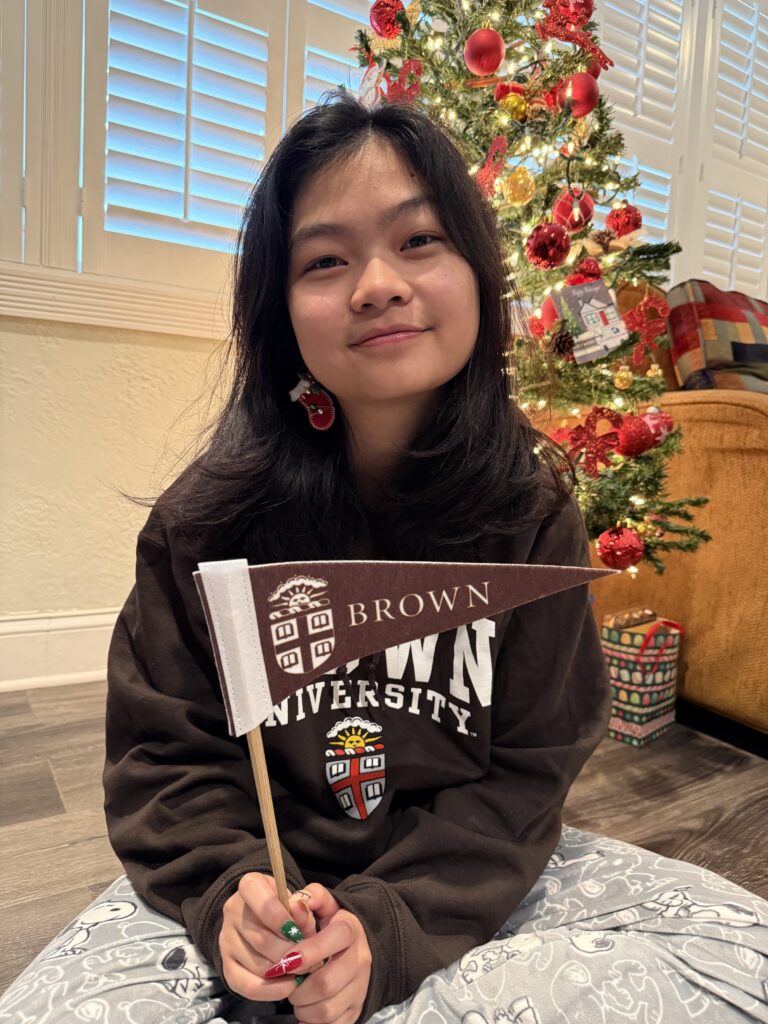 Jocelyne, a senior in the IB Program at St. Petersburg High School (FL), attended our summer College Planning Boot Camp as a rising 6th grader. She went on to join our college planning cohort program as an 8th grader, served on our youth leadership board throughout high school, founded a College Cohort Club at her high school, contributed to both our “Who I Am” book series and the ACT Study Skills and Learning Strategies project. The many years of leadership and community service Jocelyne contributed to our foundation supported her application to Brown.
Jocelyne, a senior in the IB Program at St. Petersburg High School (FL), attended our summer College Planning Boot Camp as a rising 6th grader. She went on to join our college planning cohort program as an 8th grader, served on our youth leadership board throughout high school, founded a College Cohort Club at her high school, contributed to both our “Who I Am” book series and the ACT Study Skills and Learning Strategies project. The many years of leadership and community service Jocelyne contributed to our foundation supported her application to Brown.
A Fortuitous Meeting
I met Jocelyne during the summer of 2019, when, as a rising 6th grader, she attended our 5-day College Planning Boot Camp through our partnership with Pinellas County Schools (FL). Intellectually curious, deeply pensive, and with an infectious laugh, she was destined to become a mainstay in our program. She attended our boot camp again as a rising 7th grader where she volunteered to serve as a discussion group leader. As an 8th grader, she formally joined our College Planning Cohort Program for high school students. As a 9th grader, she became a Co-President of our Youth Leadership Board. As a sophomore, she founded a College Cohort Club at her high school to assist expand the college knowledge of other first-generation students.
Jocelyne has become one of the most accomplished students in the history of our program. If not the most successful in processing and applying the information in every aspect of her approach to schooling. She embraced our 3 pillars of scholarship, leadership, and service in ways that have had an indelible and lasting impact on our foundation, in the lives of students at her school, in our national program, and in the lives of her family.
Plan Your Recommendation
As a middle school and first-generation student, Jocelyne was completely unaware of the potential impact a recommendation could have 7 years later during Brown’s review of her college application—but we did. During her 7-year middle through high school progression, Jocelyne followed our guidance and developed a long list of achievements in our program—all of which I was able to recount in the recommendation letter that I wrote to support her application to Brown.
Jocelyne wrote the bylaws and started the first chapter of our College Cohort Clubs at her St. Petersburg High School. Promoted the club via TikTok, resulting in over 50 students at each eat and learn lunchtime meeting. Her outreach efforts have resulted in amazing outcomes for many first generation students at her high school, one of whom was recently offered admission to Caltech. Jocelyne’s coaching guided her older sister as the first in their family to attend college into Johns Hopkins University.
Jocelyne has served as a literary and artistic contributor to our “Who I Am” series of books developed to provide guidance for students in grades 6 – 12 across such topics as personality types, multiple intelligences, temperament, mindset, grit, and learning styles. She has also served as a discussion group leader in our monthly virtual meetings of students from throughout the country and as an instructor for both middle school and high school students at our summer college planning and study skills boot camps. In all of these roles, Jocelyne has demonstrated patience, has prepared lesson plans, and has created surveys to assess her effectiveness in working with students. All of these actions have been done with a genuine desire to help others and to make a difference in their lives.
As a small CBO, our foundation is unable to devote significant time to training or monitoring our student volunteers. We seek students with whom we can share an idea and plant a seed. We then trust students to nurture the seed and achieve results using their own skills, creativity, and critical thinking. In Jocelyne’s situation, despite balancing our program with the academic demands of the IB Program at her high school, her incredible work ethic has consistently produced results, no matter what the task. She brought together 2 other first generation students from her community to create a podcast, “The Undebatable Relatables” (https://www.youtube.com/watch?v=JJei2XUTXEA) to provide college planning guidance; collaborated with students from Florida, Georgia, and South Carolina to create a Black History Month and Lunar New Year Tribute video (https://www.youtube.com/watch?v=pd4NPSmBjRI); and she led the collaborative effort to write the script and develop a promotional video for our foundation ((https://www.youtube.com/watch?v=LXWS9LMmTo8&t=4s).
Beyond these already significant accomplishments, Jocelyne led an ACT Study Skills and Learning Strategies project with the goal of assisting more first generation and under-resourced students with developing the skills to become better learners; expand their understanding of encoding, retention, and retrieval; and develop a working understanding of the forgetting curve—all focused on increasing academic performance in school and their performance on the ACT. When we presented this idea to Jocelyne, she took off to identify student contributors for each ACT subject area. She developed a collaboration with academically accomplished students in Florida, Georgia, and Iowa. Her leadership resulted in developing the foundation for the project and a 300-page working document that other students will continue to develop as she moves on in preparation for college. One of the contributors on the project is an alumna of our program who is a current PhD student in math who has agreed to continue collaborating with Jocelyne until the project is published.
I have treasured the 7 years that I have worked with Jocelyne and gotten to know her family. She comes from a loving and supportive household, through which she has been nurtured into an extraordinary young woman of impeccable character. While she is a passionate debater and full of ideas, she is respectful of both adults and peers; listens attentively; and articulates herself passionately. She is as aspirational in her personal goals as she is inspirational to peers. In so many ways I believe she will add value to your campus community, be an immediate contributor to campus-based organizations, and a joy to have in the classroom.
Lesson Learned…
The lesson to be learned from Jocelyne’s story is for every student to look beyond grades and test scores (although you must commit to pursuing academic excellence) towards committing yourself to an activity in which you can lead and serve in ways that make an impact on the lives of others. Then, as you apply to college or for scholarships, the faculty adviser, coach, supervisor, or organization can support your application through their first-hand testimonials of your impact on their club, team, workplace, or organization.
Taylar has great options…
January 1, 20252 Full Scholarships…
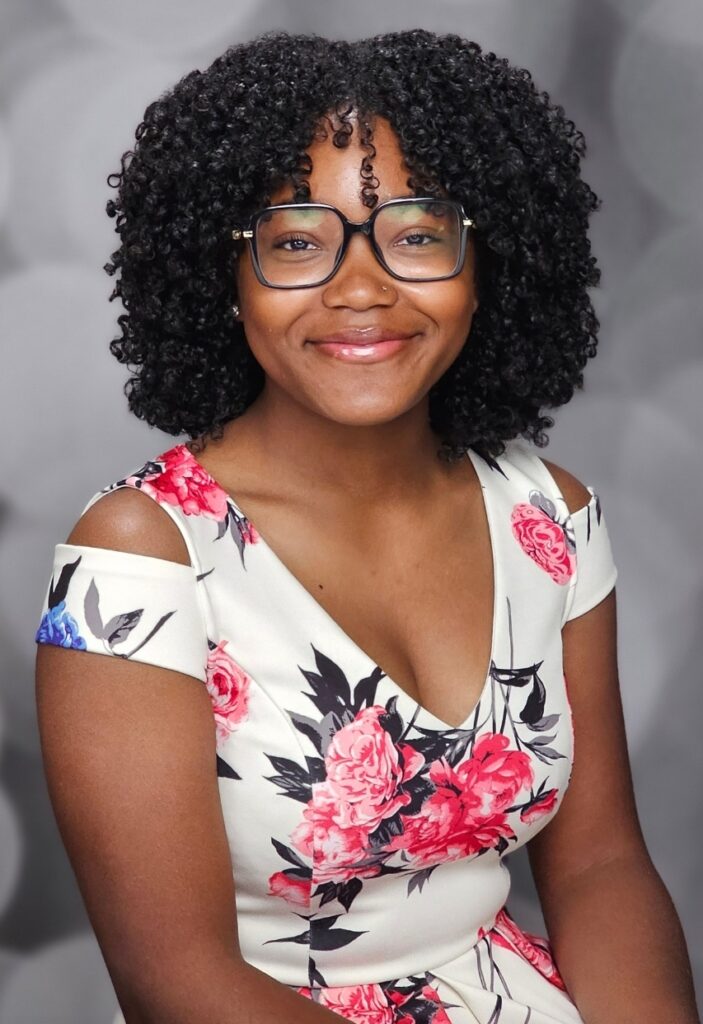
Taylar, a senior at Kennesaw Mountain High School (GA), joined our College Planning Cohort program as a rising 9th grader. She has already been offered two full scholarships: The Dovey Johnson Roundtree Class of 38 Presidential Scholarship to Spelman College, and the Board of Trustees Scholarship to Xavier University of Louisiana. She is waiting to hear from other schools, but her hard work has definitively resulted in a cost-free undergraduate degree as she prepares to apply to medical school.
While establishing herself as a top academic student, Taylar was selected as first chair of her middle school band. Upon entering high school, she committed to long hours of practice and began regularly watching YouTube videos of the greatest flautists’ performances and solos. She wanted not only to learn how to master her instrument but to infuse emotion into each melody. Every day she carved out time to practice to perfect her craft and, by the end of the first semester, she was selected as the first chair flute in the Concert Band. The next semester she moved up to the Symphonic Band, and as a sophomore, she joined the Wind Symphony. In her junior year, she was the flute section leader of the marching band and entered her final year of high school as the Woodwind Captain.
Taylar demonstrated deep and emphatic thinking in her response to Spelman College’s prompt, “The Spelman tagline is ‘A Choice to Change the World.’ If you could create meaningful change around one issue in your school, community, or globally, what would it be and how would you approach making this change?” Taylar provided a comprehensive response in which she identified underage substance abuse as a problem that plagues schools and communities, then she provided a set of strategies to address the problem.
Taylar is an example of a student who embraced our guidance of “be intentional in building your résumé.” Following this guidance resulted in significant and sustained involvement in such activities as:
- Founding LGND (Legend), a nonprofit focused on fundraising for underfunded school programs and creating volunteer opportunities for teens;
- Serving as a tutor for an annual SAT Boot Camp, requiring lesson plan development, facilitating sessions, and providing feedback to assist students in increasing their SAT performance; and
- Became the President of BOND (Black Organization Nurturing Diversity), where she organized Black History Month events, increased awareness of Black history, and scheduled guest speakers, including HBCU admissions advisers and social justice advocates.
Taylar’s leadership across these and other activities, as well as her engagement in meaningful community service, established her as a top candidate for the two highly competitive scholarships that she was offered. Her academic achievement demonstrated to her prospective colleges that she is academically capable; her leadership and service demonstrate that she will bring value to her college community.
Erin is in a quandary…
January 1, 2025Decisions…

Erin, a senior at the Kennesaw Mountain High School Academy of Mathematics, Science, and Technology (GA), joined our College Planning Cohort Program as a rising 9th grader. In addition to being offered admission to Rice University, she has been offered the Distinguished Presidential Scholarship to Tuskegee University. Erin is planning to attend medical school and finds herself in a quandary. Which school should she choose? What would you do?
Erin is not only smart, she is coachable. Throughout high school, she worked through our online curriculum, demonstrated genuine intellectual curiosity about the college planning strategies that we were proposing, and made a commitment to assuming leadership roles in our foundation as well as contributing many community service hours to supporting our efforts.
Erin was a contributor to our ACT Study Skills and Learning Strategies project and served as an intern researching HBCU early acceptance medical school pathways and dual degree programs. Erin wrote the student’s perspective forHBCU Healthcare Pathways.
Before researching graduate school and medical school pathways through HBCUs, I had little preexisting knowledge of such HBCU pathways, specifically into medical school. When Mr. Wynn asked me to research these pathways. I believed that even if these pathways existed, they would be out of reach for the majority of students and worse, scarce to find. Through my research, I have found myself to be wrong on both accounts. I was astonished to learn how successful HBCUs are in creating such pathways and how accessible they are to students who want to plan pathways into graduate school, medical school, dental school, optometry school, veterinary school, or nursing school. I am confident that such pathways also exist for law school, but that was outside of my research focus. The purpose of these pathways and partnerships is to rid students of socioeconomic barriers that prevent them from pursuing higher education and to provide assurance that if they commit themselves to doing the work to meet the admissions criteria for their desired program then they will be assured of the opportunity to fulfill their dreams.
HBCUs have partnerships with graduate schools within and outside of the United States. Several even have partnerships with Ivy League schools. These partnerships can come in the form of early assurance or dual degree programs. Early assurance for a pre-med student would mean that a student would get to apply to medical school early so that a medical school would be able to offer them an early decision and a guaranteed spot. For some programs, you can choose whether or not to take the MCAT. This is a great opportunity because applying to medical school is very expensive and filled with stress and uncertainty with such low medical school admissions rates. Applicants can spend thousands of dollars in transportation expenses traveling to medical schools for in-person interviews, MCAT study tools and preparation fees, exam fees, and so much more without any guarantee of being accepted into medical school. I learned that many early assurance programs invite students to all-expenses-paid summer programs where they can receive a stipend, attend MCAT preparation classes, and gain research experience.
Dual degree programs allow students a guaranteed pathway to receiving an undergraduate and graduate, or undergraduate and medical degree. Many such programs are not only guaranteed but take less time and cost less money than would otherwise be required. For me personally, being assured of the institution where I will earn my undergraduate degree and the institution where I will earn my graduate degree or attend medical school prior to graduating from high school allows me to plan both my long-term career goals and short-term academic, leadership, and community service goals.
Many HBCUs are amazing in the sheer number of partnerships they have developed but the reverence with which they are referred to is nonpareil and are frequently featured on the websites of their partner institutions. Take, for instance, Jumoke Dumont’s article “50 Years of Medicine: The Brown-Tougaloo Partnership,” which describes the Brown University-Tougaloo College partnership:
“For 154 years, Tougaloo College, a historically black college (HBC) in Jackson, Mississippi, has played a leading role in the education of Black scientists and health professionals in the South and beyond.
The private liberal arts college is among the top US schools for the number of graduates with doctoral degrees in STEM fields, and its alums form 40 percent of Mississippi’s African American physicians and dentists.
Brown became an active partner in this tradition in 1976 when it established the Early Identification Program in Medicine for Tougaloo (EIP). An expansion of the historic Brown University-Tougaloo Partnership (BTP), the EIP identifies Tougaloo undergrads for early acceptance to Brown’s MD program.
The EIP in Medicine for Tougaloo is one of the BTP’s longest-standing active programs. It has produced two generations of physicians — MDs who are leaders in their fields and the communities they serve.”
During my research, I discovered that one HBCU had partnerships with 16 graduate schools (Xavier University of Louisiana). That means there were 16 different pathways available to students for early assurance and dual degree programs. Through my research for this project, I dispelled any preexisting notions about the quality of education or scope of opportunities offered at HBCUs and learned how committed HBCUs are to not only the success of their students, but in creating leaders like Vice President, and presidential candidate Kamala Harris, who has already had a global impact. These schools work hard to ensure that after their students receive their undergraduate degree, they have the best opportunities for continuing their education into graduate school, medical school, law school, or beyond.
As a result of my research, I now understand how and why HBCUs have such a rich and long history of producing Black professionals in virtually every career field from education to medicine and from the arts to STEM. The amount of support and tools HBCUs provide to help students pursue their educational and career aspirations is such an important feature of HBCUs. Based on indisputable outcome data, their strategies are arguably more effective for African American success than those of other highly selective schools.
Erin N.
Kennesaw Mountain High School Class of 2025
Academy of Mathematics, Science, and Technology
Newsletter: December 1, 2024
December 2, 2024







Newsletter: November 1, 2024
November 1, 2024

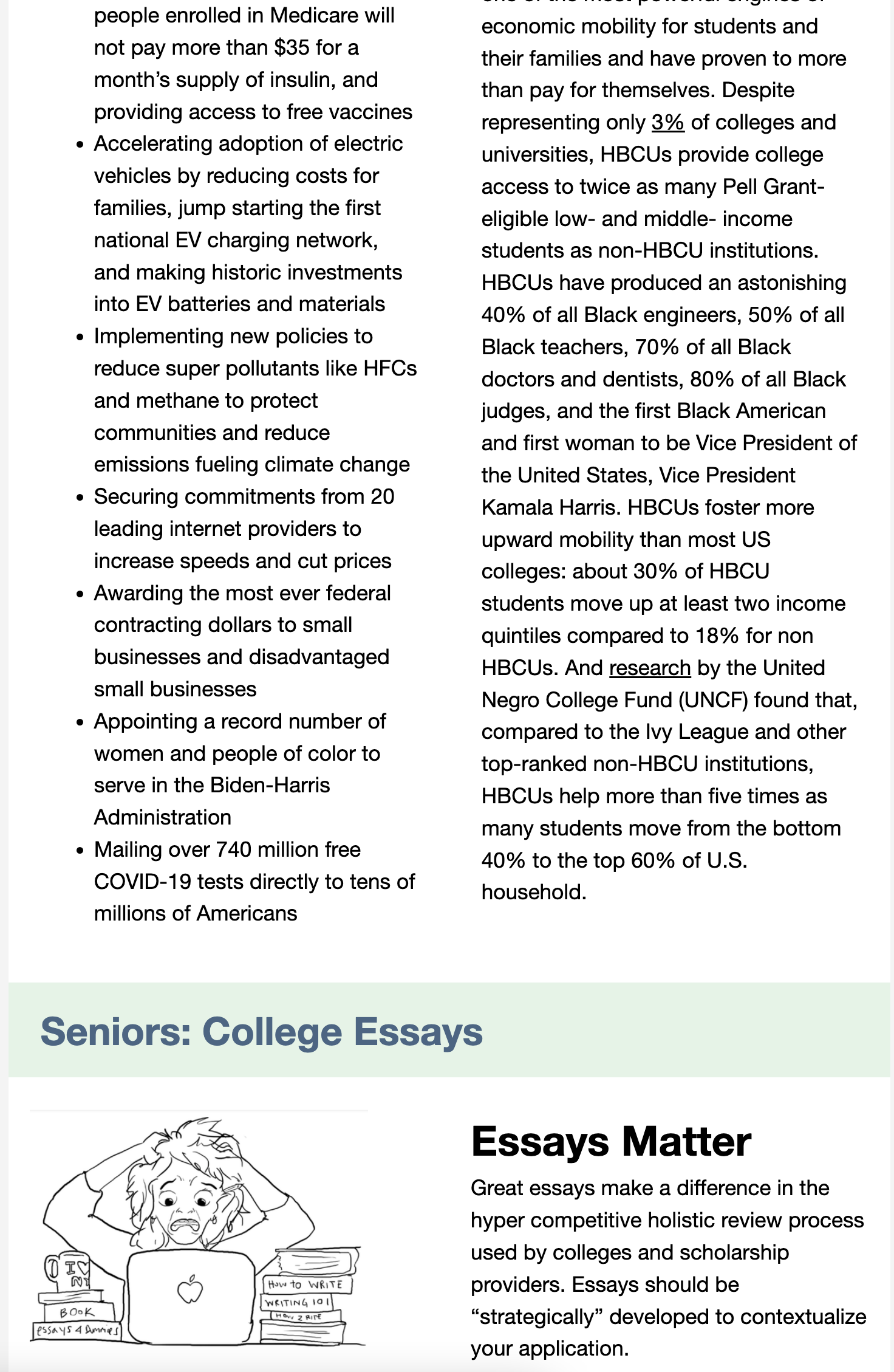
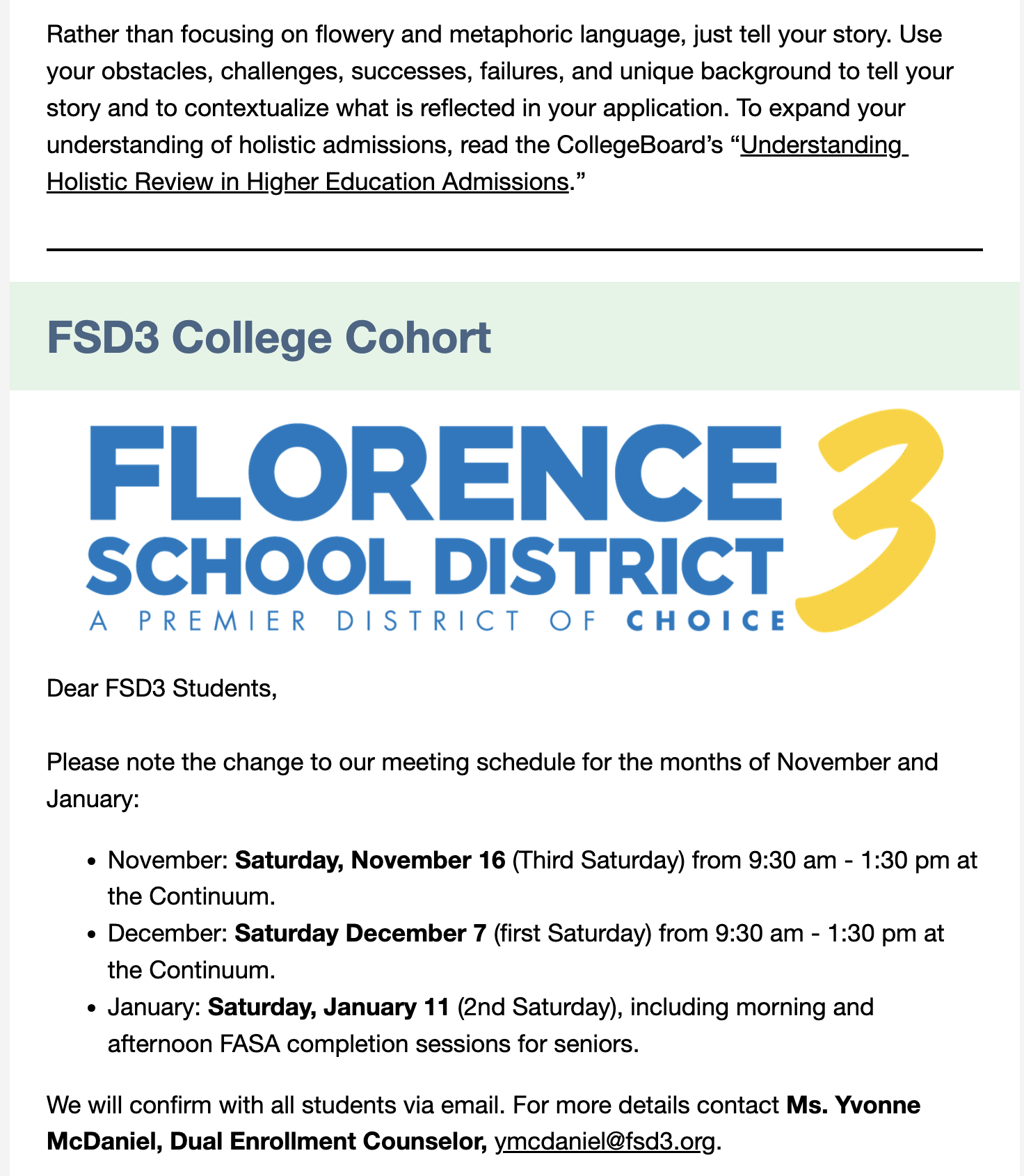



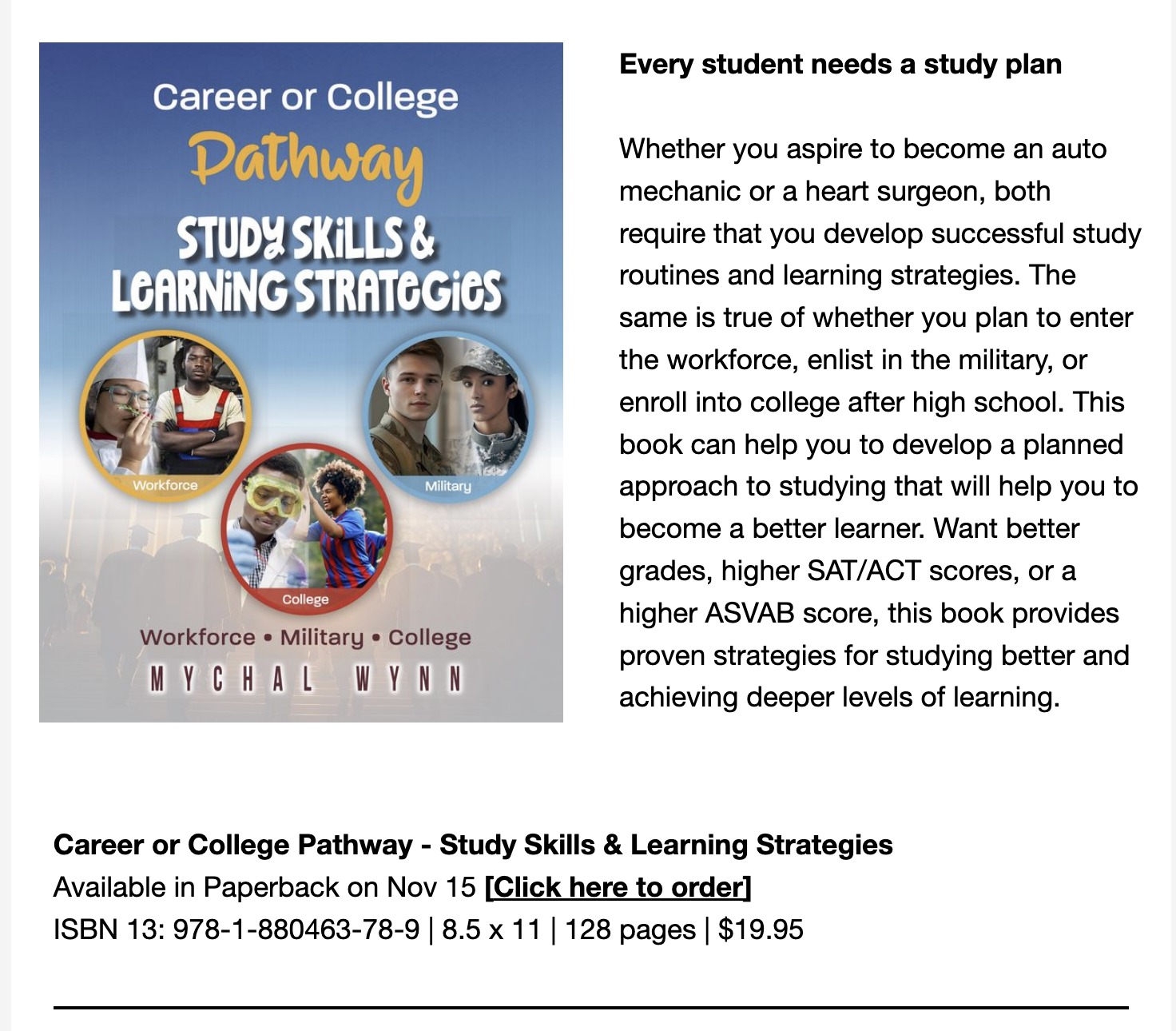
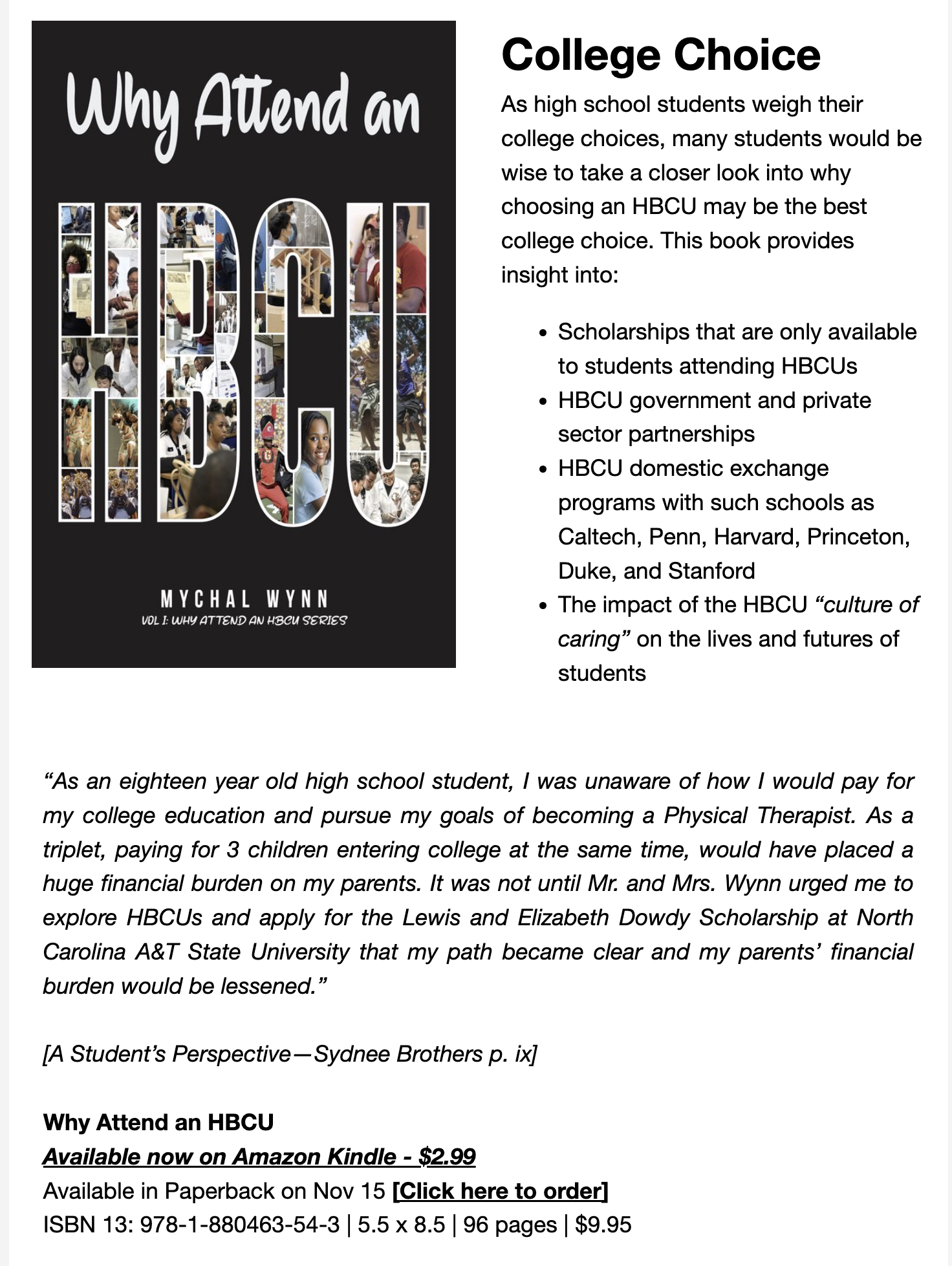

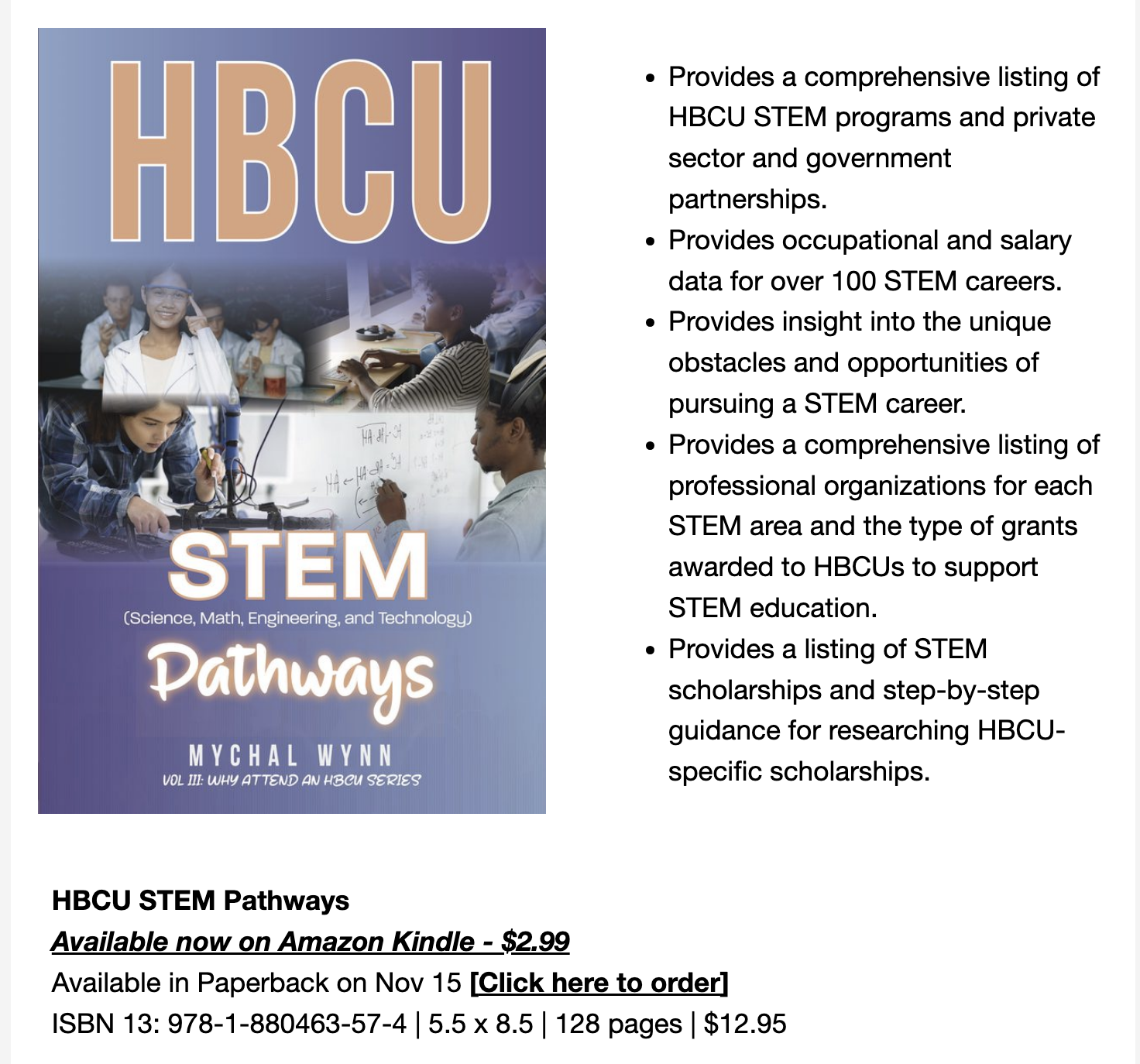
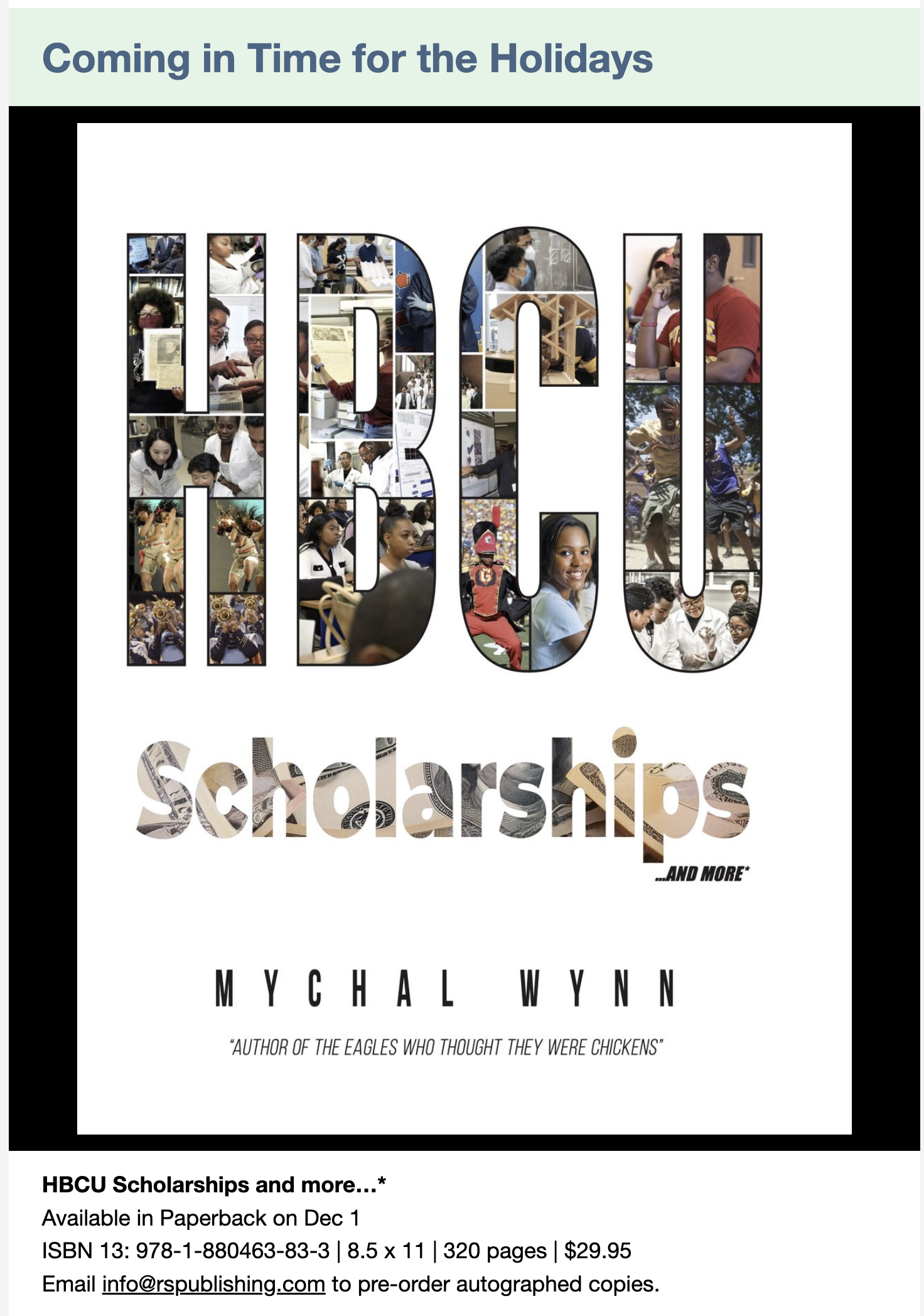
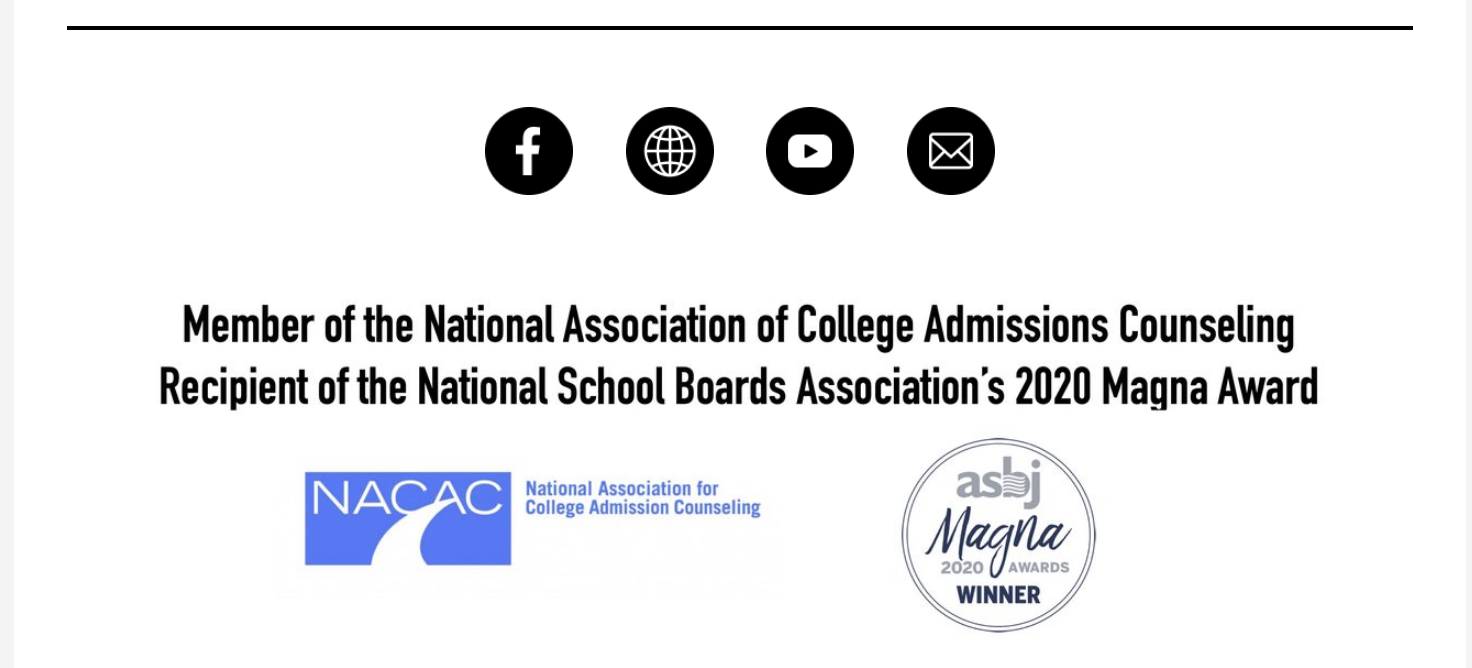
Newsletter: October 1, 2024
October 1, 2024



